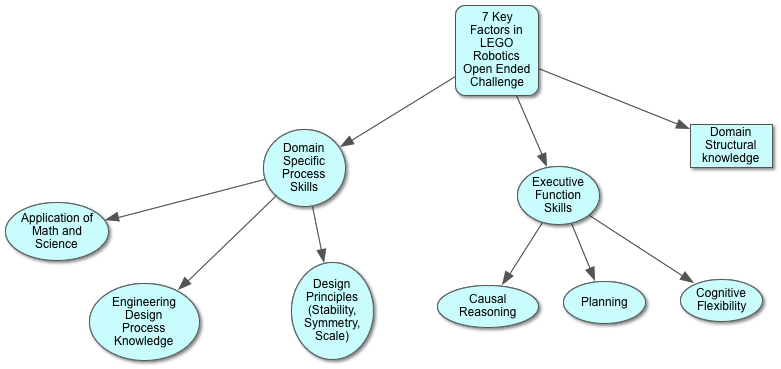Development and gender were not significant factors in determining the EDP or the success of designs in this study with the exception of executive functions such as causal reasoning, which, in particular, showed some evidence of an age related component. Elementary students’ engineering design processes (EDP) were defined instead by build complexity and the overall tools that students brought to the task. These tools were found to be structural knowledge of LEGO and a combination of executive function (casual reasoning, planning ability, and cognitive flexibility) and domain specific process skills (EDP process knowledge, application of design principles of stability, symmetry, and scale, and application of mathematics and science). Note that three of these – structural knowledge, EDP process knowledge, and design principles – were found in the literature review as being utilized by experts. Since these particular factors did not appear to be developmental, this suggests that they could be taught to students explicitly. Additional research is needed to determine more accurately the relative importance of the different factors. See Figure 106 for a diagram of these key factors.

What are the primary implications of these findings? Students with high tools that choose a low complexity build had an idealized EDP without much need to research or evaluation. These students need a more challenging assignment. Students with low tools and a high complexity build may get stuck in research and may need scaffolding in planning, structural knowledge or other process skills. Other educational implications were found primarily on how to effectively scaffold the various process skills. For example, neutral questions or restating knowledge can trigger deep student learning.
Elementary engineering based on LEGO robotics in a K-6 yearly program showed rich affordances to develop student engineering and executive function skills. While not a part of this study, students also develop 21st century skills of collaboration, communication, and creativity. Additionally, students have shown high interest and enthusiasm for these open-ended engineering challenges based on LEGO and programming. My hope is that this study has provided significant characterization, insight, and implications for teaching elementary engineering to help sustain the natural interest and ability of young children to design, build, and program to help overcome the complex problems of today.
